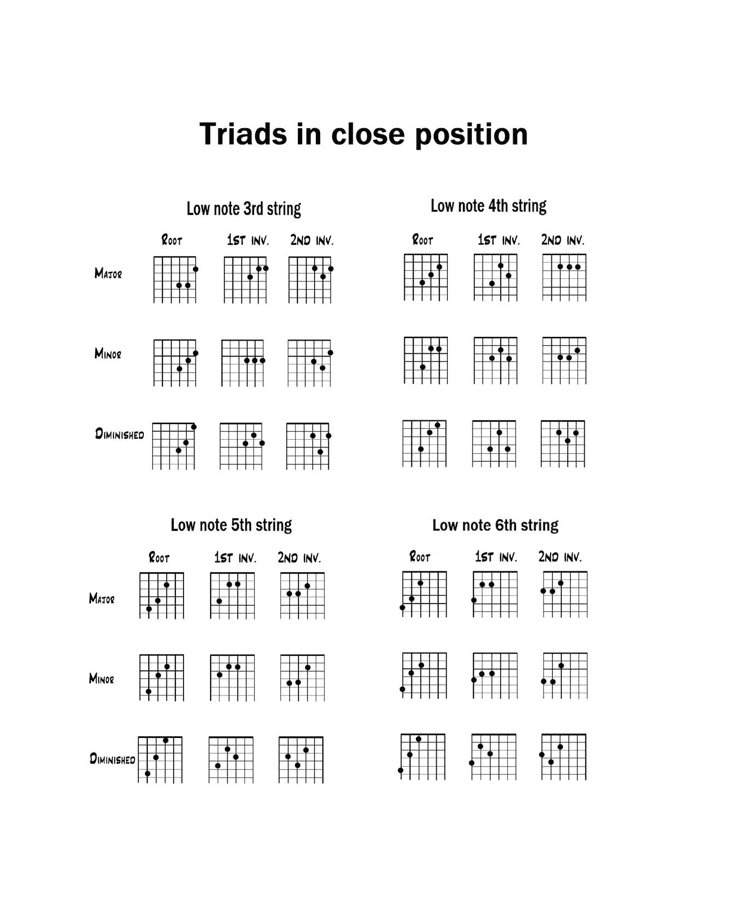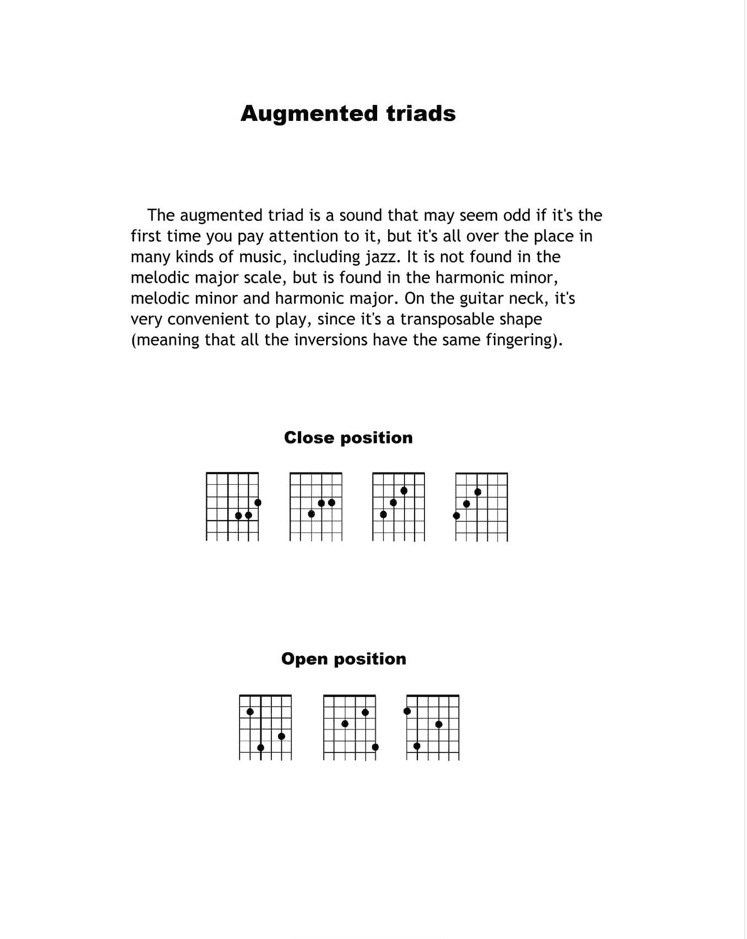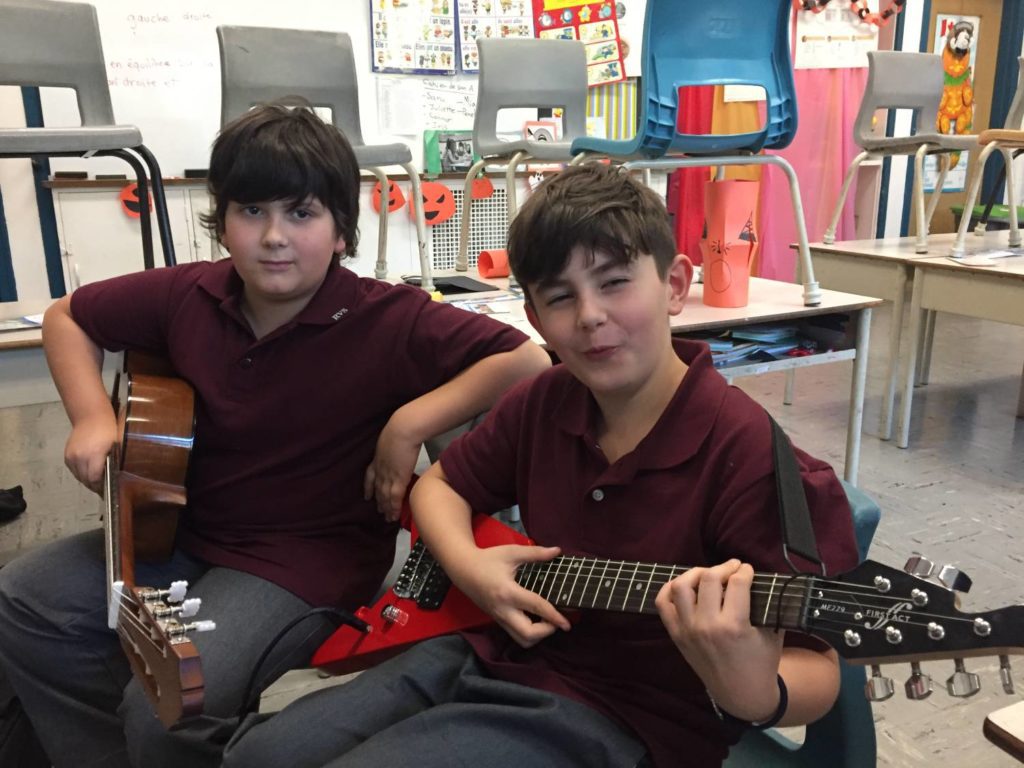Félix is a professional guitarist living in the Montreal area of Verdun. He holds a Masters Degree in Jazz Interpretation/Composition (McGill university).
Most harmony in western music is based on thirds. For example, a C major chord is comprised of the notes C, E, and G. They are a stack of thirds in the key of C major. (A stack of seconds would be C, D, and E.) What we consider functional chords are all built on this principle, no matter how many notes are in them. A chord built on 2 thirds intervals (like C, E, G) is what we call a triad (because it has three notes).
What we would call a seventh chord is comprised of 4 notes, or 3 thirds. (For example : C, E, G, and B.) This particular chord would be called C major seventh, because it has the major seventh of the scale (B) in it. We could continue on and stack another third on top. We would now have C, E, G, B, and D. We would call this a C major 9th (because it has the 9th in it). By the way, the note D is called a 9th and not a 2nd because of the presence of the major seventh (B). If the note B wasn’t in the chord, we would have called it Cadd2, or something similar (but this is a whole different topic).
For the sake of the subject, let’s add one last note to that chord, and make it a Cmaj9#11 (C-E-G-B-D-F#). When I look at the upper structure of that chord (the notes following the second or third one starting from the root), we can see other triads in there. For example, the last three notes (B-D-F#) form a B minor triad. G-B-D form a G major triad and E-G-B form an E minor triad. This means that when playing on this chord, or in the harmonic context of this chord, I can play all these triads : C major, E minor, G major, B minor, and still sound relevant and accurate with the Cmaj9#11 sound. That opens up a lot of options, and especially on an instrument that is harmonically limited like the guitar, as opposed for example to the piano, which has 88 keys and not as many technical constraints.
So, a firm grasp of triads goes a long way on the guitar, and in the next pages, you will find :
- A short list (not exhaustive) of possible upper structures triads on different chords.
- Fingering charts for Major, minor, diminished and augmented triads.N.B.: Even though I wrote these examples in only one key, it is crucial to transpose to all other keys (not all music is in C major!) :)
Examples of possible upper structure triads
C Major 7th: E minor, G major, A minor
C Major 7th #11: D major, E minor, F# diminished, G major, A minor, B minor
C minor 7th: Eb major, G minor, Bb major
C minor 6: Eb major, G minor, A diminished, Bb major
C minor 7th (b6): Eb Major, G minor, Ab major, Bb major
C7th: E diminished, G minor, A minor
C7th #11: E diminished, F# diminished, G minor, A minor, Bb augmented
C7th altered: F# major, G# major
C7th 13b9: C major or minor, Eb major or minor, Gb major or minor, A major or minor C minor 7th b5: Eb minor
How to practice this
- Make sure you are able to play all the triads in all the keys first. It’s good to have a systematic approach for this. For example, take one triad (let’s say first inversion) through the scale in key of C (C, Dm, Em, F, G, Am, Bdim), covering the whole range of your guitar. Then, proceed to the next one, until you feel comfortable playing all the triads in all keys. This takes a while, but it is well worth the effort. :)
- Try to combine different triads, for example the 3rd and 6th degrees of a given scale. (Let’s say Em and Am given you’re in C major) Try to switch from one triad to the other creating the closest movement possible. Basically, try to make the movement smooth. Most of the time, you will need another inversion for the next triad in order to make it sound smooth. This will give you a great grasp of the possible voice-leadings using this method.
- Try moving voices inside the triads. For example, in a C major triad in its first inversion (EGC), try playing EGD to EGC. Then for the next one (D minor), FAE to FAD, and so on. All of these notes can move up or down, and all the triads in a key must also be practised in different orders. This should give you an idea of the wide range of possibilities. :) I strongly recommend that you look at the George Van Eps books “Harmonic Mechanisms For Guitar” if you are interested in the subject. They are some of the best material I have come across.
- Improvise on a song you know using triads to support the melody. This will lead to all sorts of different results, and you will inevitably stumble upon things that you like while doing this. This will create reflexes and add a lot to your harmonic vocabulary.
Those are just a few ideas. The amount of material that can be generated from these ideas is endless. Good practice, and I hope to see you soon!
Félix Desbiens Guitar/Music/Jazz/Composition Instructor
Félix is a professional guitarist living in the Montreal area of Verdun. He holds a Masters Degree in Jazz Interpretation/Composition (McGill university).






Thanks! We definitely appreciate the positive support.
Best
Wonderful website you have here but I was curious about if you knew of any message boards that cover the same topics talked about in this article? I’d really like to be a part of online community where I can get advice from other experienced individuals that share the same interest. If you have any recommendations, please let me know. Thank you!
Pingback: cheap jordans (XI) Space Jam